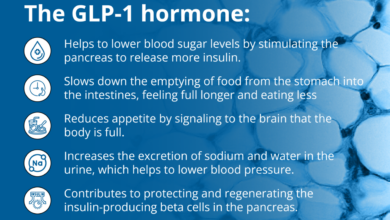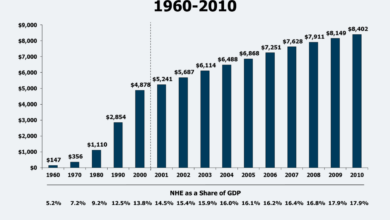
CVS Retail Pharmacy Pricing Overhaul
CVS Retail Pharmacy Pricing Overhaul: It’s a phrase that’s been buzzing around lately, and for good reason! The way CVS prices its medications is a huge deal, affecting millions of people. This isn’t just about CVS; it’s about the entire healthcare system, the relationship between pharmacies, insurance companies, and ultimately, you and me. We’ll dive into the complexities of CVS’s current pricing, compare it to competitors, and explore a potential alternative model that could impact patient affordability and the bottom line.
This post unpacks the proposed CVS retail pharmacy pricing overhaul, examining its potential impact on consumers, insurance companies, and CVS’s internal operations. We’ll analyze the ethical considerations, visualize the projected cost changes, and offer insights into how this overhaul might reshape the future of prescription drug access and affordability.
CVS Retail Pharmacy Pricing Strategies

Source: fortune.com
CVS Pharmacy, a giant in the retail pharmacy landscape, employs a complex pricing structure influenced by a multitude of factors. Understanding this structure is crucial for both patients and industry analysts alike, as it directly impacts accessibility and profitability within the healthcare system. This exploration will delve into the intricacies of CVS’s pricing strategies, comparing them to competitors and examining the forces shaping their decisions.
CVS’s Current Pricing Structure
CVS’s pricing isn’t a single, monolithic system. It’s a multi-layered approach that considers the type of medication, the patient’s insurance coverage, and the prevailing market conditions. For example, generic medications generally have lower prices than brand-name equivalents. The price a patient pays also depends heavily on their insurance plan’s formulary and co-pay structure. Cash prices, paid by uninsured individuals, are often significantly higher.
Additionally, CVS utilizes various pricing strategies, including discounts, coupons, and loyalty programs, to attract and retain customers. This dynamic pricing approach aims to balance profitability with accessibility.
Comparison with Walgreens and Walmart
Comparing CVS to its main competitors, Walgreens and Walmart, reveals interesting nuances. Generally, prices across the three pharmacies are competitive, with slight variations depending on location, specific medications, and ongoing promotions. Walmart often positions itself as a lower-cost provider, particularly for generic medications, leveraging its vast purchasing power. Walgreens, similar to CVS, employs a more balanced approach, offering a mix of pricing strategies to cater to different customer segments.
Direct price comparisons are difficult due to the constantly fluctuating prices and variations in insurance coverage, but general market observation suggests a relatively narrow range of price differences across the three major chains.
Factors Influencing CVS’s Pricing Decisions
Several key factors heavily influence CVS’s pricing decisions. Drug acquisition costs are a primary driver; the higher the cost CVS pays for a drug from manufacturers, the higher the ultimate price to the consumer. Competition from Walgreens, Walmart, and other pharmacies plays a significant role, forcing CVS to remain competitive to avoid losing market share. Insurance reimbursements are critical, as CVS negotiates with insurance companies to determine the rates they will pay for various medications.
These negotiations directly impact CVS’s profitability and influence their pricing strategies for both insured and uninsured patients. Finally, CVS also considers its own profit margins and the need to maintain a sustainable business model.
Hypothetical Alternative Pricing Model
A hypothetical alternative pricing model for CVS could focus on greater transparency and patient affordability. This model could involve a tiered system, where essential medications are priced at a significantly lower cost, subsidized by higher prices for less critical medications. This would require a thorough analysis of medication usage patterns and a strategic approach to cost management. Another component could be a more robust patient assistance program, actively helping uninsured and underinsured patients access affordable medications.
This could potentially involve partnerships with non-profit organizations and government programs. Such a model would necessitate a delicate balance between patient affordability, maintaining profitability, and incentivizing the responsible use of medications. The success of such a model would depend on detailed market research and ongoing adaptation to changing market dynamics. For example, a tiered system similar to this could be modeled on existing tiered insurance plans, offering different levels of coverage and cost-sharing based on the medication’s classification and necessity.
Impact of the Overhaul on Consumers

Source: wsj.net
CVS’s retail pharmacy pricing overhaul will undoubtedly have a significant impact on consumers, affecting individuals differently based on their insurance coverage and medication needs. Understanding these potential effects is crucial for patients to navigate the changes and make informed decisions about their healthcare costs. This section explores the varied impacts on consumers with different insurance plans and those without insurance.
Effects on Patients with Different Insurance Plans
The overhaul’s impact will vary greatly depending on the specifics of an individual’s insurance plan. Patients with comprehensive insurance plans, featuring low co-pays and deductibles, might experience minimal changes in out-of-pocket costs. However, even with comprehensive coverage, the new pricing structure could subtly shift the cost-sharing burden. For example, a plan might cover 90% of the cost, but a significant increase in the overall price of the medication could still result in a higher co-pay for the patient, even if the percentage covered remains the same.
Conversely, patients with less comprehensive plans, such as those with higher deductibles or co-pays, will likely feel a more substantial impact on their wallets. The new pricing could lead to significantly higher out-of-pocket expenses before their insurance kicks in.
Impact on Patients with High-Deductible Plans or Those Without Insurance, Cvs retail pharmacy pricing overhaul
Individuals with high-deductible health plans (HDHPs) will be particularly vulnerable to the pricing changes. They will need to pay a larger portion of the medication cost out-of-pocket before their insurance begins to cover expenses. For example, a patient with a $5,000 deductible and a prescription costing $200 under the old system might see that same prescription cost $300 under the new system.
CVS’s retail pharmacy pricing overhaul is a huge deal, impacting everyone’s access to medication. But affordable healthcare also means considering overall wellness, and that includes nutrition. I was reading this fascinating article on are women and men receptive of different types of food and game changing superfoods for women , which made me think about how diet affects our overall health and thus, our need for medication.
Ultimately, CVS’s changes need to consider the holistic picture of patient well-being.
This represents a $100 increase in their out-of-pocket expense before insurance coverage begins. The situation is even more precarious for uninsured individuals, who will bear the entire cost of their medications. This could lead to many choosing to forgo necessary medications due to unaffordability, potentially harming their health. The new pricing structure needs to be carefully considered in light of these populations.
Increased Patient Cost-Sharing
The CVS pricing overhaul has the potential to significantly increase patient cost-sharing. This is particularly true for patients with high deductibles or those without insurance, as previously mentioned. The shift in pricing could lead to a substantial increase in the amount patients pay directly for their medications. This could disproportionately affect low-income individuals and families, potentially forcing them to make difficult choices between essential medications and other necessities.
The impact of this increased cost-sharing needs to be carefully monitored to assess its effects on patient access to necessary medications.
Projected Cost Changes for Common Prescription Medications
The following table provides a hypothetical comparison of projected cost changes for some common prescription medications under the current and proposed pricing models. These figures are illustrative examples and may not reflect actual prices. It is crucial to consult your individual prescription and insurance information for accurate cost projections.
| Medication | Current Price | Proposed Price | Price Change |
|---|---|---|---|
| Lipitor (20mg, 30-day supply) | $50 | $75 | +$25 |
| Metformin (500mg, 30-day supply) | $20 | $30 | +$10 |
| Synthroid (100mcg, 30-day supply) | $40 | $60 | +$20 |
| Lisinopril (20mg, 30-day supply) | $30 | $45 | +$15 |
The Role of Insurance Companies
CVS’s pricing overhaul doesn’t exist in a vacuum; it’s deeply intertwined with the complex negotiations and agreements the company has with insurance providers. The success of the overhaul hinges significantly on these relationships, and the resulting impact on both CVS and the consumers they serve is substantial.The negotiation process between CVS and insurance companies is a high-stakes game of give-and-take, involving intense scrutiny of medication pricing and reimbursement rates.
These negotiations are typically protracted, involving numerous data points, analyses of market trends, and discussions around formulary placement – the list of drugs covered by a specific insurance plan. CVS will present their new pricing structure, highlighting the value proposition – potentially improved patient access, streamlined processes, or better overall cost management. Insurance companies, in turn, will evaluate the impact on their own bottom line, considering factors such as the number of their members who use CVS pharmacies and the potential increase in their healthcare spending.
The final agreement will represent a compromise, balancing the needs of both parties.
Negotiation Challenges During a Pricing Overhaul
Reaching agreements with insurance companies during a pricing overhaul presents several significant challenges. Firstly, the sheer volume of medications involved necessitates meticulous negotiations for each drug, considering factors like brand vs. generic options, therapeutic equivalence, and overall market competition. Secondly, differing priorities and perspectives can lead to disagreements. CVS aims to maintain profitability while offering competitive pricing, whereas insurance companies prioritize managing costs for their members without compromising quality of care.
Finally, the lack of transparency in drug pricing itself makes it difficult to establish a fair and equitable reimbursement rate. The current system’s complexity often obscures the true cost of developing and distributing medications, making it difficult to arrive at mutually agreeable figures. For example, a disagreement over the reimbursement rate for a new, expensive cancer drug could significantly impact both CVS’s profitability and the insurance company’s budget allocation for oncology treatments.
Impact of Reimbursement Rates on CVS Pricing Decisions
Changes in reimbursement rates directly influence CVS’s pricing decisions. If insurance companies reduce reimbursement rates, CVS might need to absorb some of the cost to remain competitive, potentially impacting their profit margins. Conversely, increased reimbursement rates might allow CVS to offer lower prices to consumers, enhancing their competitive position and potentially attracting more customers. For example, if an insurer drastically reduces the reimbursement rate for a widely used cholesterol medication, CVS may have to raise the co-pay for the consumer or accept a lower profit margin on that particular medication.
This delicate balance is a constant factor in CVS’s strategic decision-making process.
Impact on Insurance Company Profit Margins
The impact of CVS’s pricing overhaul on insurance company profit margins is multifaceted and potentially significant. Higher medication prices negotiated by CVS could directly increase the cost of healthcare plans, reducing the profit margin for insurance providers. However, if the overhaul leads to better cost management and increased efficiency within the pharmacy system (e.g., through improved drug utilization or reduced administrative costs), it could indirectly offset some of these increased costs.
The net effect will depend on the specific details of the negotiated agreements and the overall impact on healthcare spending. A scenario where the cost of a popular diabetes medication increases significantly after the overhaul, coupled with a high number of insured individuals using this medication, would likely lead to a negative impact on the insurer’s profit margins. Conversely, a scenario where the overhaul leads to a reduction in unnecessary medication use through improved management could potentially offset some of these increased costs, mitigating the negative impact on their profit margins.
Internal Operational Changes at CVS: Cvs Retail Pharmacy Pricing Overhaul
The CVS pharmacy pricing overhaul represents a significant undertaking, demanding meticulous planning and execution across various internal departments. Successfully implementing this change requires a phased approach, careful system adjustments, comprehensive employee training, and proactive risk management. Failure to address these operational aspects could lead to widespread disruption, impacting customer satisfaction and CVS’s bottom line.
A successful transition necessitates a well-defined plan, encompassing system upgrades, employee training, and robust change management strategies. The following steps Artikel a potential implementation pathway.
Step-by-Step Implementation Plan
- Phase 1: Assessment and Planning (3 months): This initial phase involves a thorough assessment of existing systems, identifying areas requiring modification or replacement. A detailed project plan should be developed, outlining timelines, resource allocation, and key performance indicators (KPIs). This phase also includes stakeholder communication and securing buy-in from all relevant departments.
- Phase 2: System Upgrades (6 months): This phase focuses on upgrading CVS’s billing, inventory management, and point-of-sale (POS) systems to accommodate the new pricing structure. This may involve integrating new software, customizing existing systems, and rigorous testing to ensure accuracy and efficiency. Data migration from old to new systems should be carefully planned and executed to minimize disruptions.
- Phase 3: Employee Training and Rollout (2 months): Comprehensive training programs should be developed and implemented for all pharmacy staff. This training should cover the new pricing structure, the updated systems, and troubleshooting common issues. A phased rollout, starting with pilot programs in select locations, allows for early identification and resolution of any problems before a full-scale launch.
- Phase 4: Monitoring and Optimization (Ongoing): Post-implementation, continuous monitoring and analysis of key metrics are crucial. This phase involves tracking sales data, customer feedback, and operational efficiency to identify areas for improvement and make necessary adjustments. Regular reviews and updates to the system are vital for long-term success.
Necessary System Changes
The new pricing structure demands significant changes to CVS’s internal systems. These changes are not merely cosmetic; they represent a fundamental shift in how the company manages pricing, billing, and inventory.
- Billing System: The billing system needs to be updated to accurately reflect the new pricing, including adjustments for insurance coverage and co-pays. This requires integration with insurance company databases and potentially the development of new algorithms for calculating patient out-of-pocket costs.
- Inventory Management: The inventory management system needs to be adapted to manage pricing variations across different products and insurance plans. This may involve implementing new reporting tools to track inventory levels and pricing changes, ensuring accurate stock management and minimizing waste.
- Point-of-Sale (POS) System: The POS system needs to be updated to accurately display the new prices and process transactions efficiently under the new pricing structure. This includes clear display of patient costs, insurance co-pays, and any applicable discounts.
Impact on Employee Training and Workflow
The pricing overhaul will significantly impact employee training and workflow. Pharmacists and technicians will need extensive training on the new pricing structure, the updated systems, and the processes for handling insurance claims. Workflows may need to be adjusted to accommodate the new complexities of price calculations and insurance interactions.
- Increased Training Time: Employees will require significant training to understand the new system and processes.
- Revised Workflows: Pharmacists and technicians may need to adjust their workflows to accommodate the new pricing structure and insurance interactions.
- Potential for Increased Errors: The initial period after implementation may see an increase in errors until employees become fully familiar with the new systems and processes. This necessitates robust error-handling mechanisms and support systems.
Potential Implementation Challenges
Implementing the pricing overhaul presents several potential challenges that CVS needs to proactively address.
- System Integration Issues: Integrating the new pricing structure with existing systems may encounter unforeseen technical difficulties, potentially leading to delays and disruptions.
- Employee Resistance to Change: Employees may resist the changes due to concerns about increased workload or complexity. Effective communication and training are crucial to mitigate this resistance.
- Insurance Company Reimbursement Issues: Negotiating with insurance companies to ensure accurate and timely reimbursement under the new pricing structure may prove challenging.
- Customer Confusion: Customers may be confused by the new pricing structure, leading to frustration and potential negative feedback. Clear communication and customer support are essential to address these concerns.
- Data Migration Errors: Errors during the migration of data from old to new systems could lead to inaccuracies in pricing and billing.
Ethical Considerations
The recent CVS retail pharmacy pricing overhaul presents a complex ethical landscape. Balancing the need for profitability with the imperative to provide affordable and accessible healthcare is a significant challenge. Raising prices on essential medications, even incrementally, can disproportionately impact vulnerable populations, while lowering prices might jeopardize the financial stability of the company, potentially leading to reduced services or even closures.
This necessitates a careful examination of the ethical implications and proactive strategies to mitigate potential negative consequences.The impact of pricing changes on patient access to medications is paramount. Increased prices can force patients to forgo necessary medications, leading to poorer health outcomes and increased healthcare costs in the long run. Conversely, drastically reduced prices, while seemingly beneficial, might not be sustainable in the long term and could lead to medication shortages.
CVS’s retail pharmacy pricing overhaul is a big deal, impacting how many people access medication. It makes me wonder about the ripple effects on healthcare access, especially considering news like the recent closures; check out this article on hshs prevea close wisconsin hospitals health centers to see what I mean. The combined impact of both these situations could significantly affect patient care and affordability of prescription drugs in the long run.
Therefore, a delicate balance must be struck to ensure both affordability and accessibility.
Impact on Patient Access
The potential for reduced patient access to medications due to pricing changes is a serious ethical concern. For example, a significant price increase on insulin, a life-sustaining medication for diabetics, could lead to rationing or complete abandonment of treatment, resulting in severe health complications. Similarly, increased prices on hypertension medications could lead to uncontrolled blood pressure, increasing the risk of stroke and heart attack.
CVS must consider the potential health consequences of its pricing decisions and actively seek ways to minimize the negative impact on patients.
CVS’s retail pharmacy pricing overhaul is a huge deal, impacting everyone from individual consumers to large healthcare systems. It makes you think about the pressures on the entire healthcare system, like the incredible strain highlighted by the recent new york state nurse strike NYSNA Montefiore Mount Sinai , which underscores the need for fair compensation and better working conditions across the board.
Ultimately, affordable medication access and fair wages for healthcare workers are intertwined aspects of a functioning healthcare system, making the CVS changes even more significant in the current climate.
Strategies to Mitigate Negative Ethical Consequences
CVS could employ several strategies to mitigate the ethical risks associated with pricing changes. One approach is to offer financial assistance programs, such as co-pay assistance or patient assistance programs, specifically targeting vulnerable populations. This would help to ensure that patients can still afford their medications even after price increases. Another strategy is to negotiate lower prices with pharmaceutical manufacturers to offset any increases passed on to consumers.
This requires a collaborative approach and a commitment to prioritizing patient needs over short-term profits. Furthermore, exploring alternative medication delivery models, such as mail-order pharmacies or telepharmacy, could potentially reduce costs and improve access.
Transparent Communication with Customers
Transparent and effective communication is crucial to maintaining trust with customers during a pricing overhaul. CVS should clearly explain the reasons behind any price changes, including the factors influencing costs, such as manufacturing costs, insurance negotiations, and operational expenses. This information should be readily available to customers through various channels, including their website, in-store signage, and direct mail communications.
Providing detailed information on available financial assistance programs and resources is also essential. Open communication builds trust and helps to address any concerns or anxieties customers may have about the pricing changes. Regular updates and proactive engagement with patient advocacy groups can further enhance transparency and build positive relationships with the community.
Visual Representation of Pricing Changes

Source: abcnews.com
Understanding the impact of CVS’s pharmacy pricing overhaul requires a clear visual representation of the projected changes. A well-designed graph can effectively communicate the complexities of medication costs and their fluctuations for consumers. We’ll use a combination of charts to illustrate these changes.A bar graph would be particularly useful for comparing the average cost of common prescription medications before and after the overhaul.
The horizontal axis would represent the specific medications (e.g., Lipitor, Metformin, Synthroid), while the vertical axis would represent the total cost to the consumer. Each bar would be split into segments representing the copay, deductible contribution, and any remaining cost the patient is responsible for. Different colored segments could clearly delineate these cost components. Data points would be derived from projected average costs based on CVS’s internal data and insurance plan formularies.
Error bars could represent the variability in costs across different insurance plans.
Comparison of Medication Costs Before and After Overhaul
To illustrate the potential impact on a typical consumer, let’s consider a scenario involving a patient with a common prescription for Lipitor 20mg, a statin used to lower cholesterol. Before the overhaul, let’s assume this patient’s insurance plan had a $25 copay and a $1000 annual deductible. The total cost of a 3-month supply of Lipitor was $150, with the patient paying the $25 copay.
After meeting their deductible, the remaining costs would be covered by insurance. After the overhaul, let’s assume CVS’s new pricing strategy reduces the cost of the 3-month supply to $ The copay remains at $25, but the patient’s out-of-pocket cost is significantly reduced. A table can effectively illustrate this comparison:
| Cost Component | Before Overhaul | After Overhaul |
|---|---|---|
| Medication Cost | $150 | $120 |
| Copay | $25 | $25 |
| Deductible Contribution | $0 (assuming deductible already met) | $0 (assuming deductible already met) |
| Patient Out-of-Pocket Cost | $25 | $25 |
This table demonstrates that while the medication cost decreased, the patient’s out-of-pocket expense might remain the same in this particular scenario because of the copay structure. However, for patients who haven’t met their deductible, the reduction in the medication cost would translate to a lower out-of-pocket expense. Different scenarios with varying deductible statuses and insurance plans would need to be modeled to fully capture the impact of the overhaul.
Last Recap
The CVS retail pharmacy pricing overhaul is a multifaceted issue with significant implications for patients, insurance providers, and the company itself. While the potential benefits of increased transparency and affordability are enticing, the path to implementation is fraught with challenges. Successfully navigating these complexities requires careful consideration of ethical implications, effective communication with consumers, and collaboration across the healthcare ecosystem.
Ultimately, the success of this overhaul will depend on its ability to balance the needs of all stakeholders while ensuring access to essential medications for everyone.
Frequently Asked Questions
Will this overhaul affect my insurance coverage?
Potentially, yes. The impact will depend on your specific insurance plan and the details of the new pricing structure. Some plans may see increased co-pays or deductibles.
How will CVS communicate these price changes to customers?
CVS will likely employ a multi-pronged approach, including in-store signage, online updates, and potentially direct communication to patients. Transparency will be key.
What if I can’t afford my medications under the new pricing?
CVS may offer patient assistance programs or work with manufacturers to explore cost-saving options. It’s crucial to speak with your pharmacist and/or doctor to explore available resources.
Will this impact the availability of certain medications?
It’s possible. If the new pricing model negatively impacts CVS’s profitability, it could theoretically affect the range of medications they stock, although this is not necessarily a guaranteed outcome.





